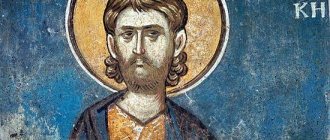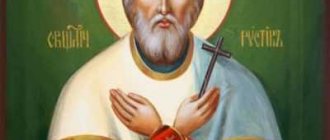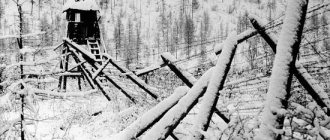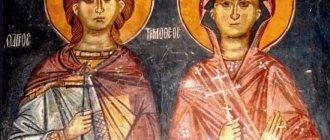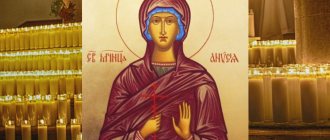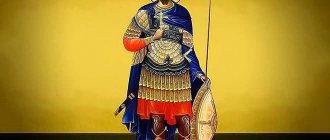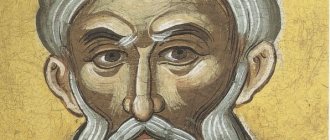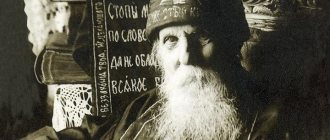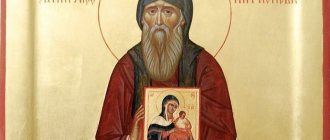Apostle and Evangelist Luke (1st century)
Luke, the beloved physician, greets you, the Apostle Paul writes about him in his letter to the Colossians (Col. 4:14). Luke, an apostle from the 70s, wrote one of the four Gospels under the leadership of the Apostle Paul and the book “The Acts of the Holy Apostles.” According to legend, he was the first to paint icons of the Mother of God. In honor of the evangelist, another holy doctor received his name in monasticism - Archbishop Luke (Voino-Yasenetsky). The Apostle Luke suffered martyrdom: he was hanged on a tree.
Saints unmercenary Cosmas and Damian (IV century)
The Orthodox Church honors the memory of three pairs of saints with the names Cosmas and Damian: all of them became famous as unmercenary doctors. The most revered are Cosmas and Damian of Asia (IV century), siblings. Raised by a Christian mother (Reverend Theodotia), they healed the sick for free and, in addition, they themselves searched for and treated wild animals, which then followed them without fear. At the end of his life, Damian broke his vow of free healing: a hopeless patient who had recovered begged him in the name of the Holy Trinity to take three eggs as a gift for healing. Hearing that his brother had neglected his vow, Cosmas bequeathed that he and Damian should be buried separately. After the death of the brothers, God revealed to people that Damian accepted the gift for the sake of love for the Creator, and not out of self-interest, and the holy brothers were buried together.
Holy unmercenary martyrs Cyrus and John (late 3rd - early 4th centuries)
The holy unmercenary Cyrus was a famous doctor in the city of Alexandria, he treated all the sick for free, including healing mental illnesses. At the same time, the holy doctor was not afraid to preach the Gospel. During the persecution of Emperor Diocletian, Cyrus retired to the Arabian desert, where he became a monk and continued to heal people who came to him. One day the doctor-monk was found by the warrior John, who wished to become his follower. After some time, the teacher and student went to Egypt together to support a Christian woman named Athanasia, who was imprisoned with her three daughters. Cyrus and John were captured and tortured in front of Athanasia. But neither she, nor her children, nor the martyrs themselves renounced Christ and were executed.
Life of Saint Diomede
Saint Diomede was born in the same city as Paul, one of the twelve disciples of Christ. This city was called Tarsus and was located on the territory of Cilicia, present-day Turkey. Here Diomede learned to be a doctor and converted to Christianity.
The future martyr did not charge poor people for treatment. At the same time, he often replaced medications with prayerful calls to the name of the Lord and made the sign of the cross over his patients. Holy faith helped Diomede to heal not only the most severe physical illnesses, but also spiritual ailments.
With his healing art and stories about the Savior, Diomede converted people to the faith of Christ. The holy healer, following the example of his compatriot, the Apostle Paul, left his native place, going to different cities, bringing people the teaching of Christ.
This was the period of the reign of the Roman emperor Diocletian, who distinguished himself by his brutal persecution of Christians. The ruler even created a special decree according to which Christians were deprived of all rights. Christian churches were destroyed everywhere, religious literature was destroyed, and Christians were allowed to be tortured. However, they did not have the right to ask for protection in court.
But this did not stop Diomede. He moved from one city to another, healing people, preaching the faith of Christ. So he reached the city of Nicaea, where he continued to engage in missionary and medical activities. Thanks to the saint, many idolaters converted to Christianity. He visited prisons, caring for arrested and convicted Christians, strengthening them for the upcoming torment.
Rumors about the Christian healer and the miracles he performed reached the Emperor Diocletian, who was then in the eastern capital of the Roman Empire - Nicomedia. The ruler ordered Diomede to be seized and the doctor brought to him for trial.
The soldiers sent for the Tara doctor put him in a cart and took him to the pagan court. On the way, the saint asked the guards to stop to pray to the Lord. During prayer, Diomede gave up his ghost, as the Lord decided to deliver the saint from torment.
The soldiers, fearful of the emperor's anger, cut off the martyr's head. They decided to bring it to the ruler as proof that his order had been completed. But after this, the guards instantly went blind.
When Diocletian saw the blind soldiers, he ordered them to return the head to its place, placing it on the body of the martyr. Returning to the place of massacre and following the instructions of the ruler, the warriors regained their sight. After this, the guards who regained their sight began to profess the Christian faith.
Crows flew over the body of the martyr, left on the road. Then one fairly wealthy pious woman named Petronia, who had once been cured by Diomede, bought the saint’s body in order to bury the healer’s remains.
Holy Great Martyr Panteleimon (III century)
Born in Bithynia (Asia Minor) in the family of a noble pagan and a secret Christian (Saint Evvula). He studied medicine with the famous physician Euphrosynus and subsequently became a court physician under Emperor Maximian. The life of a handsome and successful young man was turned upside down by a meeting with Presbyter Ermolai, who subsequently baptized him. After the death of his father (who was baptized at the end of his life), the future great martyr devoted himself to helping the sick and poor. He treated everyone free of charge, invariably praying for the sick, and visited prisoners in prison. His success as a doctor became the envy of his colleagues in the profession - they reported to the emperor, the persecutor of Christians, that Panteleimon confesses Christ and visits his fellow believers in prison. An arrest followed. At the same time, the teacher of Panteleimon, the martyr Ermolai, was tried and executed, along with two other presbyters. The young doctor was tortured and in the end also beheaded with a sword. The Holy Great Martyr and Healer Panteleimon is revered in the Church as the patron of doctors and intercessor for the sick.
DIOMEDE
[Diomedes; Greek Διομήδης] († late III - early IV century), martyr. (memorial August 16), St. doctor. Genus. in Tarsus of Cilicia in the pious Christ. family. A doctor by profession, he not only treated physical illnesses, but also relieved spiritual ailments by invoking the name of Christ. Having moved from Tarsus to Nicaea in Bithynia, D. healed and converted many people to Christianity. residents of this city, visited the dungeons where Christians were languishing, looked after them and strengthened them in the upcoming martyrdom. Rumor about D. reached the imp. Diocletian (284-305). The ruler ordered the soldiers to seize the doctor and bring him to the city of Nicomedia. On the way, D. asked to stop the cart, got off it to pray, and, kneeling down, surrendered his soul to God. The emperor's servants, finding D. already dead, decided to cut off his head as proof of the fulfillment of the order given to them. At that very moment they went blind. Diocletian, seeing the head brought, ordered it to be taken back and applied to the body of the martyr. When the soldiers fulfilled this command, their sight returned to them again and they believed in Christ.
Mch. Diomede. Miniature from Greco-cargo. manuscripts. XV century (RNB. O. I. 58. L. 125) Martyr. Diomede. Miniature from Greco-cargo. manuscripts. XV century (RNB. O. I. 58. L. 125)
Two lengthy Lives of D. have been preserved: anonymous (BHG, N 548) and written ca. 1239-1240 mon. Lawrence of Rutien from Calabria (BHG, N 549, 549b), as well as short versions of the Martyrdom of this saint (BHG, N 550 and SynCP. Col. 901). The anonymous Life of D., published by V.V. Latyshev based on the Vatican manuscript (Vatic. gr. 1671), contains additional information compared to the Life written by Mon. Lawrence: a story about a raven, which flew over the body of the martyr and protected it from other birds of prey until a certain rich woman Petronia, healed by D., ransomed and buried with honor the remains of the saint. According to Latyshev, this episode could have been added later by K.-L. by a scribe who noticed that the Life omitted information about the burial and time of death of D. It is interesting that the date of death is indicated according to Roman. calendar (“before the third Ides of August”) with a translation into Greek added later. time reckoning (Aug. 11), and Aug. 16, when after. A celebration began in honor of this saint, which is the day of the martyr’s burial.
Latyshev believes that both lengthy Lives go back to a common unpreserved source and that the addition of the anonymous Lives was associated with the need to pronounce a word of praise on the day of memory of D.
The authenticity of the information contained in the Lives of D. is doubted by some writers. scientists (R. van Doren, T. Bekke).
According to H. G. Beck, mon. Lawrence is not the author of the Life of D., but only a copyist of the manuscript (Ambros. 834), in which it is contained (Beck. Kirche und theol. Literatur. S. 580).
The veneration of D. was widespread in the K-field, already under the emperor. Constantine the Great (306-337) built a temple there in the name of the martyr. The head and other relics of D. were kept in this temple. Around the 1st half. VI century in the same place, not far from the Golden Gate, a monastery dedicated to him arose. According to the Chronicle of the Continuer Theophan, c. Diomede was rebuilt and decorated by Basil I the Macedonian (867-886), since here he received the prediction of his accession to the throne.
2 words of praise have been preserved by D. Niketas David Paphlagon (late 9th - early 10th century) (BHG, N 551) and Maximus Planud (c. 1255 - c. 1305) (BHG, N 552).
Orthodox The Church reveres D. as a healer and calls on his name during the sacrament of the Blessing of Anointing.
In the Martyrology of Bl. Jerome, as well as in the Martyrology of Uzuard, the day of memory of D. is marked on June 9, whereas in Byzantium. The synaxarions on this day mention the martyrs Orestes and Rodon. In the Roman Martyrology, D.'s memory is indicated on August 16.
Source: BHG, N 548-552; ActaSS. Aug. T. 3. P. 266-270 [Life of the martyr. Diomede, written by Lawrence of Rutien]; SynCP. Col. 901; MartHieron. P. 311; MartRom. P. 341-342; Latyshev V.V. Unpublished Greek. hagiogr. texts. St. Petersburg, 1914. pp. 125-132. (ZIAN; Vol. 12. No. 2) [anonymous Life]; JSV. Aug. pp. 283-284.
Lit.: Sergius (Spassky). Monthsword. T. 3. P. 326; Van Doren R. Diomeede // DHGE. T. 14. Col. 504; Becquet T. Diomede // BiblSS. Vol. 4. Col. 629; Janin. Églises et monastères. P. 95-97; Description of the K-field shrines in lat. manuscripts from the 12th century. / Per. and commentary: L. K. Maciel Sanchez // The miraculous icon in Byzantium and Ancient Rus'. M., 1996. pp. 436-463.
A. N. Kryukova
Iconography
As a rule, D. is depicted as a young martyr with a barely noticeable beard, with short dark hair curly at the ends; dressed in a chiton and himation, usually red, holding a cross in his hands. This type of single image is presented on an enamel medallion (11th century) of the Pala d'Oro (Cathedral of San Marco, Venice) - across the chest, with a cross in the hand. As a rule, D. is depicted in menaine cycles. In miniatures, his image was preserved in Greco-cargo. manuscripts of the 15th century. (the so-called Athos Book of Models) - young, with a short beard, what is unusual is that, like other St. healers (Panteleimon, Cosmas and Damian), D. is depicted in clothes similar to the priestly phelonion (red) and the sacrament (blue), with a narrow strip of orarion, in his hands is not a cross, but the instruments of his service as a healer (not distinguishable) (RNB . OI 58. L. 125). The image of the saint is consistently found in the wall minologies of a number of Balkan churches: in the narthex of the church in Pec (1561, copybook 1667) - a half-figure; in c. St. Nicholas in Pelinov, Montenegro (1717-1718), - full length; under 11 Aug. depicted together with the martyr. Zeno in c. Vmch. George monastery of Staro Nagorichino, Macedonia (1317-1318), - half-figure. In Russian Menaia, despite the preferred image under 16 Aug. The image of the Savior not made by hands, D. is also presented, for example, in the engraved calendar for August by the engraver G. P. Tepchegorsky, 1722 (RSL).
In Greek iconographic original XVIII century, “Erminia” by Dionysius Furnoagrafiot, description of D. is given in the menaion section. “How the suffering of the martyrs is depicted every month of the whole year” under August 16: “... a young man with a pointed beard was beheaded while sleeping” (Part 3. § 22); in Russian tradition, according to the descriptions of iconographic originals of the 18th century, he is “a Russian like Flor (martyr Flor of Illyria - Author), the hair is short on the ears, the bra is small, in three vestments, the top is cinnabar, the middle is cinnabar, the underside is green, in his hand is a cross , in another vessel, boots on his feet” (Filimonov. Iconographic original. P. 121).
Lit.: Erminia DF. M., 1993. P. 214; Mijoviě. Menologist. 1973. pp. 376, 390; Evseeva. Athos book. Cat. No. 177. P. 324.
E.V.Sh.
Martyr Orestes (late 3rd - early 4th centuries)
He was a famous doctor in Cappadocia. A Christian since childhood, he openly preached Christianity during persecution. During interrogation by the royal dignitary, Orestes showed extraordinary courage: when asked to give his name, he replied that his name was Christian, and it seemed to him higher than the name given by his parents at birth. Firmly refusing to renounce his faith, the holy doctor endured many tortures: 40 soldiers, replacing each other, tortured him. Then the martyr was tied to a wild horse and dragged along the ground until Saint Orestes died.
Icon of the martyr Diomede
Saint Diomede is depicted in icons as a young man with dark, curly hair and an equally dark, small beard.
You can recognize the image of a martyr by the following signs:
- the undershirt is a chiton, red;
- a blue cloak is thrown over the chiton, secured with a fabula (clasp) on the right shoulder;
- in his hands the saint holds the healer’s tools: with his right hand – a box of medicines, with his left – a medicine stick.
There are both half-length and full-length images of the martyr.
Martyr Diomede (III century)
A doctor by profession, he healed not only physical, but also mental illnesses. Traveling a lot, Diomede preached Christ, converting and baptizing pagans. One day a doctor came to Nicaea, and the pagan emperor Diocletian sent soldiers to arrest him. But he died a holy, peaceful death on his way back from Nicaea. According to the life, having found his body, the soldiers cut off the saint’s head as proof of the fulfillment of the emperor’s order, but they immediately became blind. Diocletian ordered the head to be taken back to the body: the soldiers who carried out the order regained their sight. The name of the martyr Diomedes is remembered during the sacrament of Blessing of Unction (Unction).
What do they ask the saint for?
Since during his life the holy martyr was a healer, even after his death they ask him for healing from many diseases. Diomede especially helps those suffering from skin diseases. The martyr provides assistance not only to the sick, but also to doctors. Surgeons ask the holy healer for support before performing complex surgical operations.
People turn to God’s saint for help when the following natural disasters occur:
- earthquakes;
- floods;
- fires.
Through prayers to Saint Diomede, people get rid of addictions, gain peace of mind, and strengthen in faith.
Saints Alypius (XII century) and Agapit (XI century) of Pechersk
The inhabitants of the Kiev Pechersk Lavra were the first famous holy doctors in Rus'. The Monk Agapit, in particular, became famous for healing Vladimir Monomakh, the future great prince of Kyiv, by sending him an infusion of herbs. Once, out of envy, a well-known doctor in Kyiv tried to poison a monk-healer, but the poison had no effect. Subsequently, the envious man repented and took monastic vows.
The Monk Alypius, in addition to the gift of healing, is known as an icon painter. One of the icons of his letter - the Svensk Icon of the Blessed Virgin Mary - is now kept in the State Tretyakov Gallery.
Orthodox texts
You can make a request to the holy healer in your own words. But prayer will be much more effective if you read a special Orthodox text. Prayer hymns were written for the martyr Diomede: troparion, kontakion. The texts are small and easy to remember.
Troparion
The tormented vessels made your way to Heaven, / Christ’s warrior Diomede, / having defeated the devil’s wiles, / and in Heaven you were glorified by Christ, / praying for those who preserve your memory by faith.
Righteous passion-bearer Evgeny (Botkin) (XX century)
Son of the famous Russian doctor Sergei Petrovich Botkin (physician to Alexander II and Alexander III). He graduated with honors from the Military Medical Academy and worked at the Mariinsky Hospital for the Poor. With the outbreak of the Russo-Japanese War (1904), he became a volunteer in the army and headed the medical unit of the Russian Red Cross Society. In 1908 he was invited to the family of Nicholas II as a physician. He remained in this position until his death - in 1918 he was shot along with the royal family in Yekaterinburg. In 2016, he was canonized by the Russian Orthodox Church.
